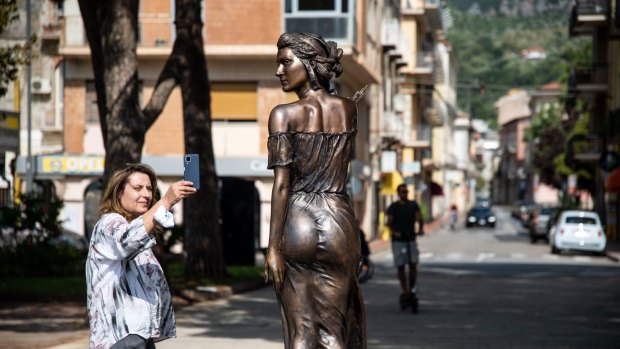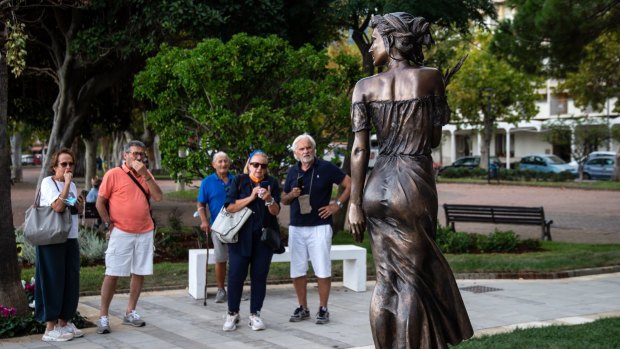This was published 2 years ago
Emanuele Stifano's statue La Spigolatrice, Sapri: 'Sexist' new statue divides Italy

The statue has sparked heated controversy as it is believed by some to be sexist. Credit: Ivan Romano/Getty
A newly-unveiled bronze statue in a small Italian town has been called "sexist" and "an offence to women", however supporters say it is an "impeccable interpretation" of a woman from a famous 19th century poem.
Sculptor Emanuele Stifano's statue called La Spigolatrice was unveiled this week on the waterfront of the Italian town of Sapri, in Italy's south-west, by former prime minister Giuseppe Conte.
The sculpture is a tribute to La Spigolatrice di Sapri (The Gleaner of Sapri) from poet Luigi Mercantini. The poem, from 1857, is taught in schools in Italy, and features a female gleaner (someone who collects grain left in fields by harvesters) who leaves to join a doomed expedition of revolutionary Carlo Pisacane.

The statue of Emanuele Stifano dedicated to the Spigolatrice (Gleaner) in Sapri, Italy. Credit: Ivan Romano/Getty
However, the statue with a transparent dress has been condemned by some politicians.
Laura Boldrini, an MP with the centre-left Democratic Party, called it "an offence to women and to the history it is supposed to celebrate". She added on Twitter: "How can even the institutions accept the representation of women as sexualised bodies. Male chauvinism is one of the evils of Italy."
Another senator, Monica Cirinna, called it "a slap on the face of history and of women, who are still (treated as) sexualised bodies".
However, Sapri mayor Antonio Gentile, has defended the statue. He said the work, by artist Emanuele Stifano, is "made with skill and impeccable interpretation" and he hoped it would become a major tourist attraction.
An "appalled and disheartened" Stifano took to Facebook to respond to the criticism.
"When I make a sculpture I always tend to cover the human body as little as possible, regardless of gender," wrote Stifano.
He added that the statue on the seafront "takes advantage of a breeze" to highlight the body, and that it "represents an ideal of a woman, evoke her pride, the awakening of a consciousness, all in a moment of great pathos".
See also: Florence's medieval wine windows used during the plague are being revived
Sign up for the Traveller Deals newsletter
Get exclusive travel deals delivered straight to your inbox. Sign up now.